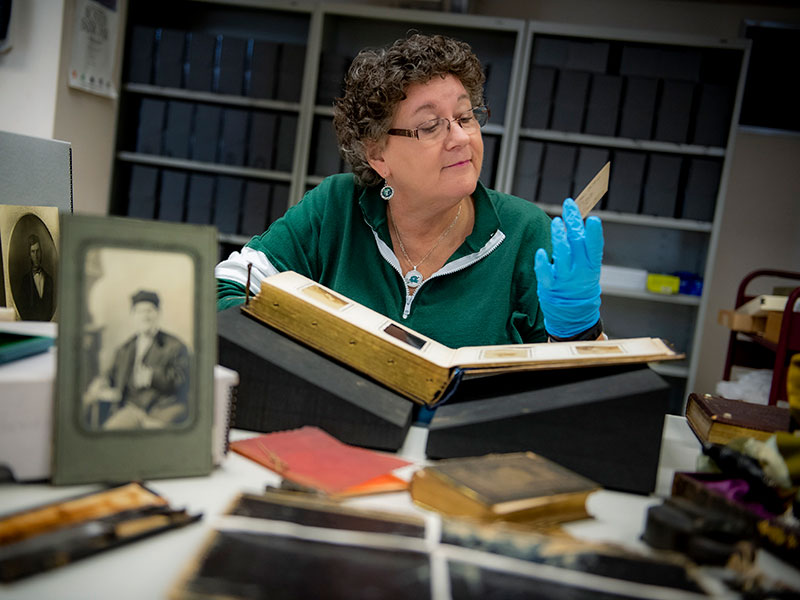Behind the Shelves: A Librarian Spotlight Interview with Ann Case
Ann Case has spent an impressive 42 years at Tulane, far and above the average Tulanian. Her work as a University Archivist helps her handle artifacts outside the history she’s experienced with the school, however, such as the writing implement Paul Tulane signed his original donation letter within 1881. Hear all she has to say in the newest installation of our series, Behind the Shelves: A Librarian Spotlight Interview…
What brought you into the profession of archives from studying anthropology?
My field within anthropology was Historical Archaeology, which uses archival sources to inform and direct archaeological research in contrast to prehistoric archaeology, where the sites do not have written texts that can be consulted to tell the archaeologist who lived there, when, and why, e.g., historical sites are generally represented in archival documents that need to be researched before any excavation can begin. Digging into the archival documents related to my archaeological sites is what first introduced me to the fascinating world of archives and ultimately led me into the archival profession.
Do you have a favorite archival piece or something you are glad to have been able to save before being shredded?
Because I come from a material-culture background that relies on artifacts to visually present the evidence of history, I love the fact that we have a few physical items in University Archives' holdings that reflect Tulane's past in a way that is immediately recognizable yet also invites further inquiry. For example, we have the actual writing implement that Paul Tulane used to sign his donation letter in 1882; one end has an ink nib and the other end has a pencil; this generally leads to a discussion about Mr. Tulane and how he earned the money that he ultimately donated to establish Tulane University. Another favorite is a yell-leader costume worn by Walter Cooke in 1917; this leads to a discussion about when females started leading cheers and Rosa Hart (a Newcomb alumna, one of the first female cheerleaders in the country). But of course the vast majority of University Archives' holdings are documents, beginning with the original manuscript Prospectus that established the Medical College of Louisiana in 1834, which was our first ancestral institution.
You've been at Tulane for 42 years (including graduate school), how has your relationship with the library shifted from being a student to working as a full-time archivist?
Throughout my 42 years at Tulane, my 'home base' has never been more than a block from the main library building: the Anthropology Department was located directly behind the library on Zimpel Street while I was in classes and my graduate carrel looked out onto its back facade. I began working full-time in the library as a staff member in Special Collections (specifically, the Louisiana Collection, which contained the published material in what is now the Louisiana Research Collection) in 1987 while still conducting dissertation research. After the workday was over, I'd go to the Microfilm Room to spend hours poring over archival documents held in other repositories. In 1990, I moved upstairs and began working in the Manuscripts Department (now the manuscripts portion of LaRC) of Special Collections, and two years later, I moved into University Archives to fill an empty position, becoming the Assistant University Archivist. I served a term as TULSA president shortly before Special Collections moved to Jones Hall in 1997, and I was a SAC representative from the library after Hurricane Katrina. When it became clear to me that working in archives, not archaeology, would be my profession, I earned my archival certification through the Academy of Certified Archivists. I was then eligible to be considered for the professional position of University Archivist when it opened upon the retirement of the former university archivist. I was selected for the position and have been officially serving in that capacity since October 2008. Thus, my relationship has shifted from being solely a consumer (as a graduate student) to a dual consumer/provider (graduate student/working staff) to primarily a provider (as a professional librarian), with a healthy sprinkling of library service (as both staff and librarian) thrown in. I'm happy to add that I am still researching and learning 'on the job' on a daily basis!
11/17/2023
Interviewed by Jasmine Young | Tulane Libraries Social Media & Marketing Assistant
